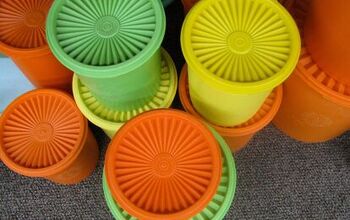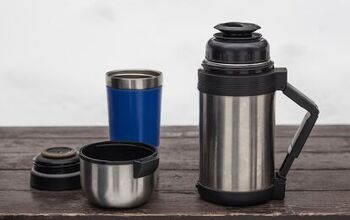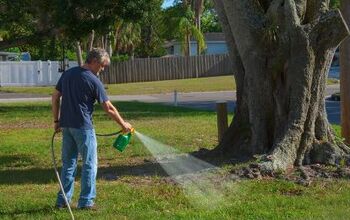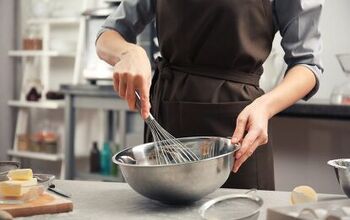Can You Put Boiling Water In Tupperware? (Find Out Now!)

Tupperware containers have been around for decades, and their staying power is largely attributed to these items being both efficient and durable. Everyone knows what you’re referring to when you say “Tupperware”, as this food storage solution has helped individuals across the world.
But just because Tupperware is strong doesn’t mean it should be mishandled, as Tupperware can only be pushed so much. Eventually, a breaking point will be reached, and if this point is exceeded then the Tupperware will break. With that being said, is Tupperware strong enough to hold boiling water? Such is the main question this article answers.
You shouldn’t put boiling water in a Tupperware container. While the Tupperware may look like it can hold boiling water, Tupperware should not be subjected to such high heat, as high heat can draw out the chemicals in the plastic and contaminate what’s being stored in the Tupperware. When you have to hold boiling water, use glass, metal, or ceramics.
Tupperware: What’s It Made Out Of?
There are some things you should keep in mind before you expose Tupperware to a pretty high temperature. For example, if you’re using old Tupperware that contains Bisphenol-A (BPA), you should avoid heating this Tupperware. Tupperware stopped manufacturing their products with Bisphenol-A more than a decade ago, but you may still own Tupperware that contains this compound.
The reason why hot foods and liquids can’t go in Tupperware that contains Bisphenol-A is because the high heat will draw out the BPA, and when it’s drawn out it will be absorbed into the food. But Tupperware that doesn’t contain this compound is safe to heat.
Polyethylene vs. Polypropylene
Tupperware is usually made out of low-density polyethylene (LDPE), though polypropylene (PP) is also used to make Tupperware. These are two of the safest plastics for storing food, and LDPE in particular is reusable along with being a great food storage material.
PP, on the other hand, is light and flexible while still remaining durable. It also resists heat well, so you won’t have to worry about high temperatures drawing out chemicals in the Tupperware. PP is used to make yogurt containers, clothes storage bins, margarine tubs, and other plastic items.
Just keep in mind that Tupperware containers are not always recyclable. Therefore, it’s best to take good care of your Tupperware, as this way you can use it for many years before you have to repurpose it or send it to a landfill.
How Long Does Tupperware Last?
Some Tupperware containers can last as long as 10 years. That being said, when your Tupperware is getting up there in age, there are some signs of wear and tear that you should keep an eye out for. If you see weird stains on the Tupperware and there’s an odor emanating from it even after it’s clean, these are indications that it’s time to purchase new Tupperware.
And if you’ve lost the lid for a piece of Tupperware, it’s best to just get some replacement Tupperware. And you don’t have to throw the lidless piece of Tupperware out. Just find a way to repurpose it.
For example, you could use old Tupperware containers to hold plants or compost, and old Tupperware also serves as a great organization solution, even when the lid is absent. And to ensure your Tupperware lasts a long time, keep the following points in mind whenever you use Tupperware containers.
Keeping Tupperware in Good Working Order
The key to ensuring Tupperware lasts a long time lies in cleaning. If you clean your Tupperware thoroughly after each use, you’ll be able to get many years out of the Tupperware.
With warm, soapy water, wash out the Tupperware. Once it’s been thoroughly washed, you can air-dry it or dry it off with a soft towel; just make sure the Tupperware is kept away from direct heat. You also shouldn’t use abrasives when cleaning Tupperware, as these can scratch the surface and make the Tupperware visually unappealing. Using abrasives may also compromise the quality of the material.
After cleaning, store Tupperware containers and lids separately; storing these items together may slow the drying process. And remember to keep the Tupperware away from abrasive utensils, as these may damage the Tupperware when you least expect it.
What Holds Hot Liquids and Foods Better Than Tupperware?
When you have to store hot foods and liquids, there are a few options out there that are better than Tupperware. Glass, metal, and ceramic are all viable options, and each material is briefly explained below.
Glass
Glass can effectively and safely hold both hot foods and liquids. Some say it’s the safest material out there, as with glass you don’t have to worry about toxic chemicals when subjecting the glass to a high temperature. This means you can confidently cook with glass in the microwave or oven.
Also, since glass is see-through, it’s great for holding liquids. And with glass, you don’t have to worry about lingering bad odors or moisture buildup. The only notable downside is that glass is fragile.
Metal
Metal containers are effective Tupperware alternatives. These are long-lasting, durable, and safe. With metal containers, you don’t have to worry about chemicals being drawn out by high heat. There are even metal containers that can go directly on a stovetop.
And for kids, metal containers are especially good, as they’re light, easy to open, and hard to break. Metal containers are also ideal because you don’t have to worry about bad odors or bacteria being absorbed by these containers.
When it comes to metal, the two popular choices are aluminum and stainless steel. In the end, metal is much more sanitary and safer than plastic, but the downside is that you can’t use metal containers in the microwave, as doing so can create a dangerous situation.
Ceramic
Human beings have been using ceramics to store food for thousands of years. Ceramics are natural, non-reactive, and free of toxins, and all these qualities make ceramics great for heating food in the microwave. You can also use ceramics in the oven. But like glass, ceramics break easily.

Matt loves everything DIY. He has been learning and practicing different trades since he was a kid, and he's often the first one called when a friend or family member needs a helping hand at home. Matt loves to work with wood and stone, and landscaping is by far his most favorite pastime.
More by Matthew Mountain



























